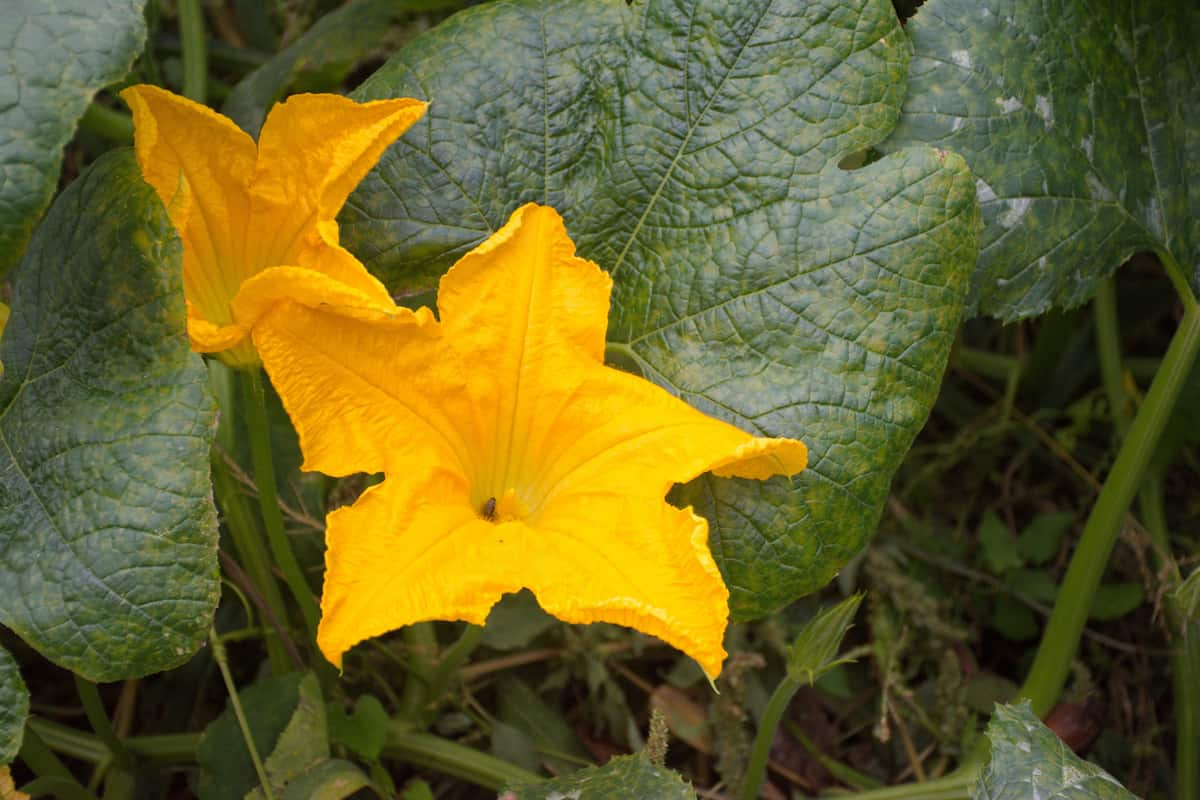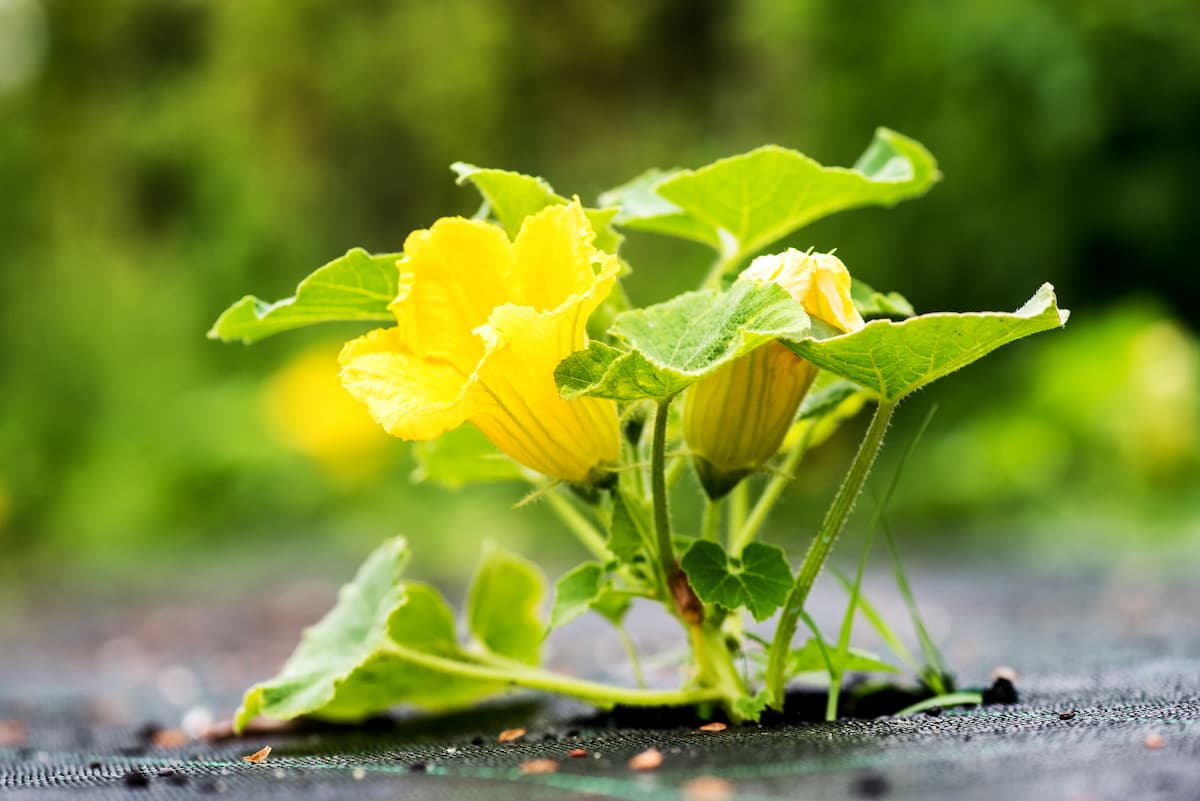Pumpkins are an important agricultural crop widely grown for food, decoration, and commercial use. However, in some cases if more female flowers are present as they are the ones that produce the fruit. This is because pumpkins typically produce both male and female flowers, but the female flowers are the ones that develop into the fruit.

Increasing the number of female flowers in pumpkin plants can be achieved through various methods, such as providing proper nutrition, ensuring adequate water supply, controlling pests and diseases, and using plant hormones to stimulate flower production. These methods can help ensure pumpkin plants produce a higher fruit yield, benefiting farmers and consumers.
How to Increase Female Flowers in Pumpkin
Introduction to Pumpkin Cultivation
Pumpkin plants require warm temperatures, adequate sunlight, and well-drained soil to thrive. They are typically planted in early spring, with 3-5 feet spacing between plants. Pumpkin plants are also heavy feeders and require regular fertilization, typically with nitrogen-rich fertilizers. Depending on the variety, pumpkins are ready to harvest after 75-100 days of planting. They are typically harvested when the fruits fully mature, and the skin hardens.
Pumpkins are a rich source of vitamins and minerals, with high Vitamin A and potassium levels. They are used for cooking, decoration, and commercial purposes. India ranks second in the world in pumpkin production, used for cooking and sweet-making. It is a good source of many vitamins like Vitamin A and potassium and offers several health benefits, such as improving vision, reducing blood pressure, and providing antioxidants.
Understand the Anatomy of Pumpkin Flowers
Pumpkins are a popular agricultural crop used in cooking, decoration, and commercial applications. The plant has male and female flowers, with only the female flowers able to develop into pumpkins. Once the male flowers appear, the female flowers typically emerge around a week later, and pollination is required for the fruit to develop and grow.
The pumpkin flower is typically yellow and has five petals, forming a star shape. A healthy pumpkin plant should produce plenty of pumpkins if the flowers are pollinated, and the growing conditions are ideal. Pumpkins require warm temperatures, adequate sunlight, and well-drained soil to thrive, with regular fertilization needed to ensure optimal growth.
Best Variety of for Cultivation Pumpkin
These are 20 of the best pumpkin varieties for cultivation: Sugar Pie, Baby Pam, Small Sugar, Connecticut Field, Howden, Jack-O-Lantern, Atlantic Giant, Lumina, Rouge Vif d’Etampes, Long Island Cheese, Musquee de Provence, Baby Bear, Spookie, Cinderella, Big Max, Jarrahdale, Queensland Blue, Blue Doll, Galeux d’Eysines, and Marina di Chioggia.
Optimal Growing Conditions for Pumpkin
- The optimum temperature for pumpkin cultivation is 25-28°C.
- Pumpkin requires well-drained loamy soil rich in organic matter with a pH of 6-7.
- Land preparation involves plowing the soil with a local tractor to bring it to a fine tilth.
- Sowing can be done in February-March or June-July, with a seed rate of 1kg per acre.
- Seeds are sown 1 inch deep in the soil, with a spacing of 60cm for two seeds per hill and 45cm for hybrid varieties.
- Seed treatment with Benlate or Bavistin at a rate of 2.5gm/kg of seed is recommended to cure soil-borne diseases.
- Proper irrigation at 6-7 days intervals is required, with 8-10 irrigations.
- Harvesting is done when the fruit’s skin turns pale brown, and the inner flesh becomes golden yellow, indicating maturity and good storage capacity.
In case you missed it: How to Increase Female Flowers in Brinjal/Eggplant: Explained in 10 Simple Steps

Pumpkin Flowering Stage
About midway through the pumpkin growing season, the vines will be covered with bright yellow flowers, starting with the male flowers. These flowers stand erect and have a stamen that is covered with pollen. The female pumpkin flowers appear about ten days after the male blossoms. It’s important to leave male flowers on the vines until after the females have closed up, as pollination requires both male and female flowers. Once the female blossoms close, small green fruits will appear at the flower’s base, infant pumpkins. As the weeks pass, the baby pumpkins will grow in size and eventually become recognizable as pumpkins, albeit green ones.
Factors that Affect Less Female Flowers in Pumpkin
- High temperatures
- Lack of pollinators
- Poor soil fertility
- Imbalanced soil pH
- Water stress
- Inadequate sunlight
- Pest damage
- Disease
- Late planting
- Improper pruning
10 Simple Tips to Increase Female Flowers in Pumpkin
- Provide adequate nutrients by adding organic matter like compost or manure to the soil, using fertilizers with higher nitrogen levels, and applying Mulch around the base of the plant.
- Create ideal growing conditions by planting pumpkins in well-drained, nutrient-rich soil, providing plants with adequate sunlight and water, and avoiding chemical fertilizers.
- Avoid excessive pruning by only pruning when necessary, using sharp tools, and never cutting off more than one-third of the plant’s total foliage at a time.
- Practice proper pollination techniques by attracting pollinators, hand-pollinating, and planting different varieties of pumpkins.
- Protect from pests and disease by planting pumpkins in raised beds with nutrient-rich soil, incorporating crop rotation and companion planting, using organic fertilizers and pesticides, and keeping the garden clean and debris-free.
- Select varieties with female flowers predominantly, and use a high potassium fertilizer to encourage growth and development.
- Cover with the Mulch around the base of the plant to maintain its moisture and regulate soil temperature
- Avoid damaging the plant’s roots during planting or weeding; this can stunt growth and reduce flower production.
- Avoid chemical pesticides or fertilizers, disrupt the plant’s hormone balance, and reduce flower production.
- Attract pollinators to the garden by planting flowers that bees and other insects love.
Manual Pollination of Pumpkin
First, to hand pollinate pumpkin flowers, identify a male flower with a stamen covered in fuzzy pollen. Peel back its petals to expose the stamen and rub it over each segment of a female flower’s pistil. Alternatively, use a paintbrush or cotton swab to gather yellow pollen from the male flower and brush it over the female’s pistil. After pollination, gently seal the female flower by pressing its petals together to prevent nearby bugs from transferring pollen away. The female flower petals will dry up and fall off, and if pollinated sufficiently, the tiny ovary will grow into a fat pumpkin. It’s an easy and effective way to ensure your pumpkins grow to their fullest potential.
In case you missed it: How to Increase Female Flowers in Tomato: Explained in 10 Simple Steps

Conclusion
Female flowers in pumpkins can be easily done through hand pollination. Identify a male flower, peel back its petals, and gently rub the stamen over each segment of a female flower’s pistil. Alternatively, use a paintbrush or cotton swab to gather pollen from a male flower and brush it onto the female’s pistil. Seal the female flower by gently pressing its petals together. With proper pollination, the female flower will grow into a fat pumpkin.
- Feed Your Flock for Less: Top 10 Tips to Save on Chicken Feed
- Ultimate Guide to Ossabaw Island Hog: Breeding, Raising, Diet, and Care
- Hatching Answers: The Top 10 Reasons Your Chickens Aren’t Laying Eggs
- Eggs and Economics: Breaking Down the Cost of Raising Backyard Chickens
- Defend Your Greens: Proven Methods to Keep Iguanas Out of Your Garden
- Ultimate Guide to Cinnamon Queen Chicken: A Comprehensive Guide for Beginners
- Ultimate Guide to California Tan Chicken: Breeding, Raising, Diet, Egg-Production and Care
- Ultimate Guide to Marsh Daisy Chicken: Breeding, Raising, Diet, and Care
- 10 Types of Chicken Farming Businesses You Can Start for Profits